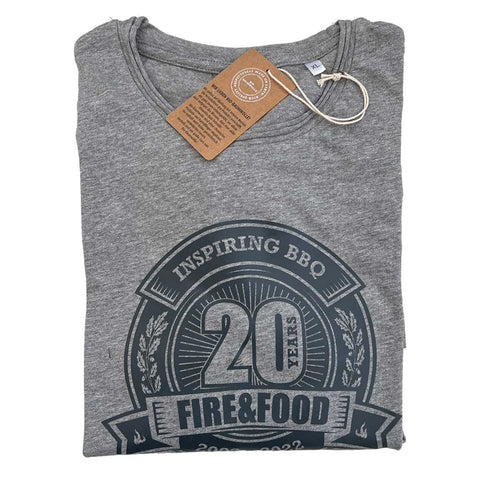Quality Sells – Butchery in transition
For over 20 years, the regional butchers' guilds have been complaining about the decline in butcher shops. According to the Central Association of German Crafts (ZDH), more businesses are closed than opened each year. The reasons for this are complex. Anyone who wants to survive as a self-employed craftsman in this environment needs the ability to think outside the box. And the courage to implement new ideas.
Helge Monse
Paul Lamping
While it was initially a change in consumer behavior that caused problems for butchers nationwide, today the problem of a lack of skilled personnel and a lack of successors to take over the business is at the forefront when looking for reasons for the demise of butchers. In Oldenburg, it was the Monse butcher's shop that was hit in 2015. For decades, the family business was considered an institution in the heart of the Lower Saxony city. People met here on weekdays for their regular sausage and meat purchases and on Saturdays to buy the last delicacies for the weekend and chat with neighbors while standing in line. They ordered the party service for the next family celebration or, depending on the season, stocked up on grilled meat, kale with pinkel or Christmas poultry.
But unexpected health reasons meant that the traditional family business had to close its shop and over 50 employees lost their jobs. A successor could not be found. Helge Monse finally found suitable partners and converted the traditional company into a modern online retailer. The trained heating engineer and electrical engineer was once convinced by his father-in-law to switch careers and learn the profession of master butcher and sausage maker from scratch in the family business. As a true Oldenburger, he is naturally a kale lover, and so he has focused on preparing traditional cooked and cabbage sausages, which no decent kale dish can do without in the cold season and which Monse ships throughout Germany and abroad via his online shop. But this is a seasonal business. During the rest of the year, Monse produces meat and sausage products according to the "nose to tail" principle, and even the cowhides are tanned and sold through the shop. The animals come from small, sustainable farmers who mostly only raise livestock as a sideline and are far removed from mass animal farming. This includes the Galloways owned by Paul Lamping from Telbrake near Vechta. The building contractor took over the herd from his father together with his brother and runs the breeding with a lot of passion. The herd comprises almost 70 animals, which are kept on the pasture whatever the weather and only feed on green fodder. In addition to the fresh grass, they are fed with home-grown hay if necessary. And so, during our visit, we meet Lamping mowing the very extensive pastures, and it takes some time before we can attract attention. The frugal cattle live here as is typical and therefore species-appropriate for Galloways. Monse buys about one cow a month from Lamping and has it slaughtered and processed at a partner company in Wildeshausen, which means a short transport route for the animals. The cattle are then between two and a half and three years old and weigh around 300 kilograms when slaughtered. Monse emphasizes that all other animals he needs for the products in his online store also come from small family-run businesses.
From nose to tail
Slaughtering, cutting, maturing, processing and shipping takes place at the Tonn butcher's shop in Wildeshausen. It is a small, regional slaughterhouse that slaughters and cuts up 10 to 12 large animals and 50 to 70 pigs a month and with which the Monse butcher family has been working for around 25 years. The fresh meat is sent to customers in packages from the company Landpack. The company has developed environmentally friendly and shipping-ready packaging boxes that use compostable materials such as straw and hemp instead of Styrofoam. Sausage in a jar or the vacuum-packed cabbage sausages and the pre-cooked kale are packaged and shipped in the traditional way.
Galloway meat is our topic in the following recipes - after all, we want to see the quality for ourselves. They were written by Heinrich Herwig, a northern German foodie who publishes his recipes on his blog "Gaumenschrei" among other places. Helge Monse and he enjoy standing together at the grill or stove and sharing their passion for regionally produced ingredients.
Tomahawk steak from Galloway with grilled polenta and tomato-beetroot sauce
Ingredients :
• 1 Tomahawk steak from Galloway beef
• 125g polenta
• Olive oil
• ½ l beetroot juice
• 5 tomatoes
• 1 onion
• 1 clove of garlic
• a few sprigs of savory
• 1 tbsp honey
• Balsamic
• Tomato sauce
• 20g butter
• coarse sea salt
Preparation :
Cook the polenta according to the instructions on the packet, adding salt and a little olive oil, spread it on baking paper until it is finger-thick and allow to cool.
For the sauce, roughly dice the onion, chop the garlic and sauté in olive oil together with the savory. Add honey and continue to sauté. Dice the tomatoes and add to the onions with some of the beetroot juice. Allow to boil vigorously, stirring occasionally. Gradually add the remaining juice. Allow to reduce vigorously.
The tomahawk is grilled backwards. To do this, first grill the steak indirectly at around 80 °C in a closed grill system until the core temperature reaches 50 °C. During this time, pour the tomato and onion sauce into a sieve and press it through well. Boil the juice until it has thickened a little. Season with salt, Tabasco and balsamic vinegar and add the butter.
Cut out polenta slices with a serving ring, brush with a little oil and grill on both sides. Finish grilling the tomahawk on a very hot grill; it should get a nice branding. Cut the meat open, add polenta slices and sprinkle sea salt and sauce on top.





















